... neuere Einträge
Freitag, 27. Mai 2011
Freitag, 27. Mai 2011
Day 79-83: China - Luoyang and Xi'an
Here are some of my favourite exhibits which I saw during the last days:
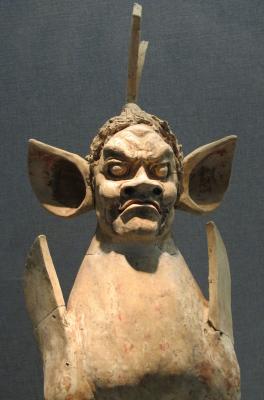
Tomb guardian - nothing ever escaped him...
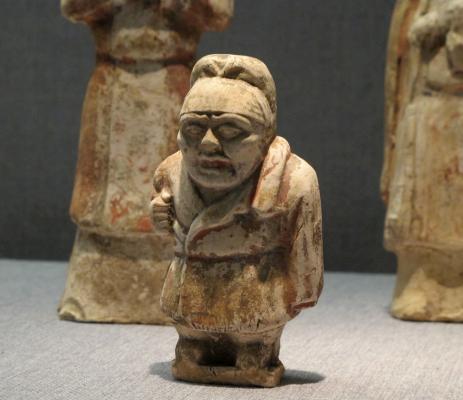
...well, I am not sure about him?

Nothing has changed - the typical depiction of a foreigner: High nose, deep-set eyes and way too much beard...

...not to talk about the strange looking fashion!
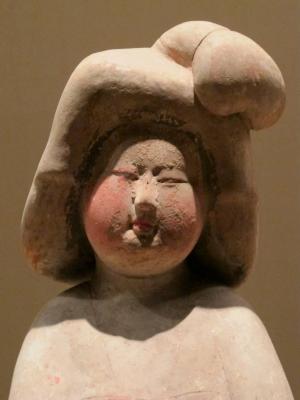
White skin, a little bit chubby and towering hair - the embodiment of beauty during the Tang dynasty.
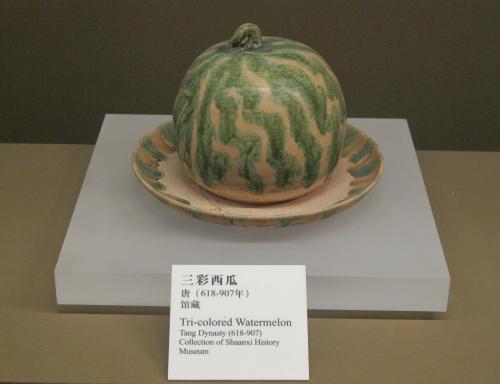
Concerned about your afterlife? Well, this fellow will not suffer from hunger after having eaten this watermelon.
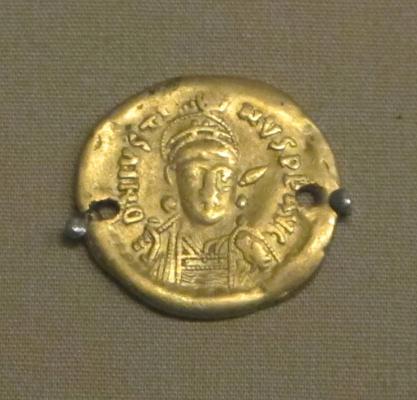
A golden coin from the East Roman Empire found inside a Chinese tomb. The coin initially came to China via the ancient Silk Road. It was later used in a funerary context as a payment or bribe for the ferryman who conveyed souls across the river Stix that divided the world of the living from the world of the dead. Roman coin, Chinese tomb, ancient Greek and Roman funerary custom, put into the mouth of a Chinese...wow, that's globalization!
Everyone who visits the city of Luoyang has to make a trip to the Temple of the White Horse. According to legend, this temple is the first Buddhist temple in China, established in 68 AD under the patronage of Emperor Ming in the Eastern Han capital Luoyang.
After the emperor had dreamed about the establishment of Buddhism in India, two of his emissaries were sent for the search of Buddhist scriptures. On their way they encountered two Indian Buddhist monks. The emissaries managed to persuade them to join them and return to China. They carried Buddhist scriptures, relics and statues of Buddha, riding on two white horses. After their arrival in China, the emperor built a temple in their honour and named it the Temple of the White Horse as an appreciation of the two white horses that had carried them all the way to China.

Where there is a temple named after two white horses, the horses cannot be far away.
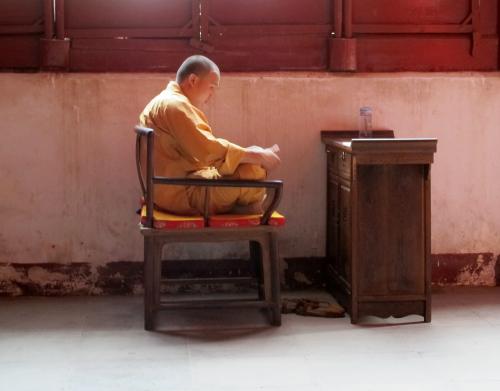
A Buddhist monk studying the Buddhist scriptures.

On the way through the premises of the temple...
...there was this strange atmosphere in the air...

...something was different today. For some people this was just a natural phenomenon, for others it was the holy light of Buddha ;)
One of the most famous sights in China - the Buddhist Longmen Grottoes in Luoyang. Carved into the limestone cliffs of the Xiangshan and Longmen Mountains are as many as 100.000 Buddhist statues within 1.400 caves, ranging in size from 25 mm to 17 m. Furthermore, the area contains nearly 2.500 stelae and inscriptions as well as over sixty Buddhist pagodas.
The work on the grottoes began during the Northern Wei Dynasty in 493 AD. Patrons and donors included emperors and members of the royal family, aristocrats, officials and religious groups. The most famous patron was Wu Zetian, the only female empress of China who reigned during Tang dynasty.
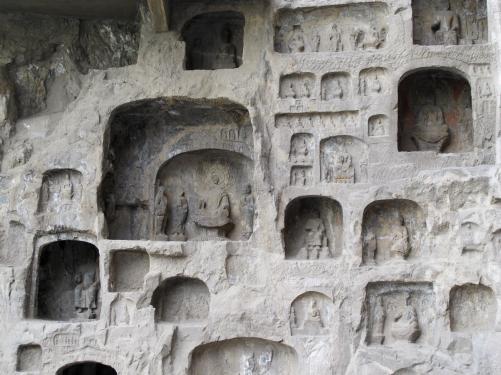
The cliffs of the Xiangshan and Longmen Mountains...over and over dotted with caves housing thousands of Buddhist sculptures.

Some of the sculptures are obvious, others are only found on a closer view.
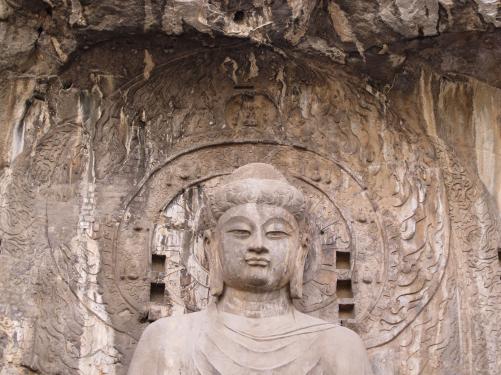
Of the nine huge carved statues, the highly impressive image of Vairocana Buddha is sculpted on the back wall of the Fengxian Cave. The sculpture measures over 17 m. Only the ears reach a lenght of 2 m, promising a loooong life. An inscription at the base dates the Buddha to the year 676.
It is said that empress Wu Zetian donated "twenty-thousand strings of her rouge and powder money" to complete this cave. The sculpture was modelled after the empress herself. Among other names, it was later termed the "Chinese Mona Lisa".
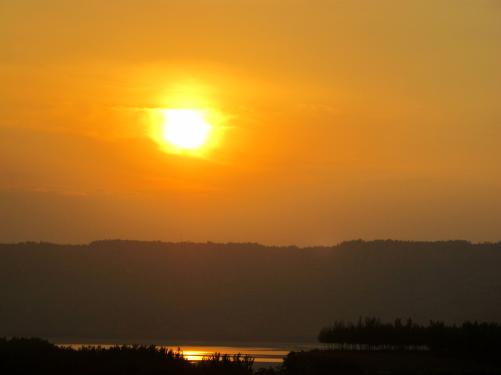
After a long day of visits...the train makes its way through the dusk, bringing me to the final destination of my journey...Xi'an.
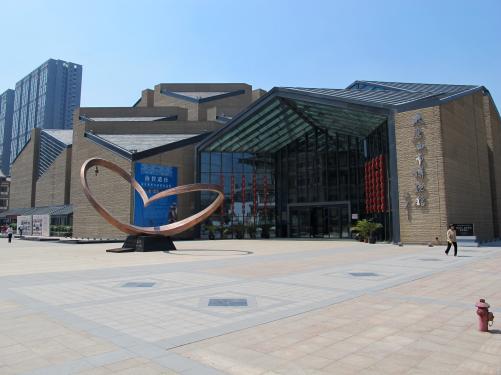
Built on the former site of the Western Market of the ancient capital Chang'an, present-day Xi'an - the Western Market Museum of Xi'an. It was on this square where merchants from all directions met, exchanged their goods and ideas.

Tomb guardian - nothing ever escaped him...

...well, I am not sure about him?

Nothing has changed - the typical depiction of a foreigner: High nose, deep-set eyes and way too much beard...

...not to talk about the strange looking fashion!

White skin, a little bit chubby and towering hair - the embodiment of beauty during the Tang dynasty.

Concerned about your afterlife? Well, this fellow will not suffer from hunger after having eaten this watermelon.

A golden coin from the East Roman Empire found inside a Chinese tomb. The coin initially came to China via the ancient Silk Road. It was later used in a funerary context as a payment or bribe for the ferryman who conveyed souls across the river Stix that divided the world of the living from the world of the dead. Roman coin, Chinese tomb, ancient Greek and Roman funerary custom, put into the mouth of a Chinese...wow, that's globalization!
Everyone who visits the city of Luoyang has to make a trip to the Temple of the White Horse. According to legend, this temple is the first Buddhist temple in China, established in 68 AD under the patronage of Emperor Ming in the Eastern Han capital Luoyang.
After the emperor had dreamed about the establishment of Buddhism in India, two of his emissaries were sent for the search of Buddhist scriptures. On their way they encountered two Indian Buddhist monks. The emissaries managed to persuade them to join them and return to China. They carried Buddhist scriptures, relics and statues of Buddha, riding on two white horses. After their arrival in China, the emperor built a temple in their honour and named it the Temple of the White Horse as an appreciation of the two white horses that had carried them all the way to China.

Where there is a temple named after two white horses, the horses cannot be far away.

A Buddhist monk studying the Buddhist scriptures.

On the way through the premises of the temple...
...there was this strange atmosphere in the air...

...something was different today. For some people this was just a natural phenomenon, for others it was the holy light of Buddha ;)
One of the most famous sights in China - the Buddhist Longmen Grottoes in Luoyang. Carved into the limestone cliffs of the Xiangshan and Longmen Mountains are as many as 100.000 Buddhist statues within 1.400 caves, ranging in size from 25 mm to 17 m. Furthermore, the area contains nearly 2.500 stelae and inscriptions as well as over sixty Buddhist pagodas.
The work on the grottoes began during the Northern Wei Dynasty in 493 AD. Patrons and donors included emperors and members of the royal family, aristocrats, officials and religious groups. The most famous patron was Wu Zetian, the only female empress of China who reigned during Tang dynasty.

The cliffs of the Xiangshan and Longmen Mountains...over and over dotted with caves housing thousands of Buddhist sculptures.

Some of the sculptures are obvious, others are only found on a closer view.

Of the nine huge carved statues, the highly impressive image of Vairocana Buddha is sculpted on the back wall of the Fengxian Cave. The sculpture measures over 17 m. Only the ears reach a lenght of 2 m, promising a loooong life. An inscription at the base dates the Buddha to the year 676.
It is said that empress Wu Zetian donated "twenty-thousand strings of her rouge and powder money" to complete this cave. The sculpture was modelled after the empress herself. Among other names, it was later termed the "Chinese Mona Lisa".

After a long day of visits...the train makes its way through the dusk, bringing me to the final destination of my journey...Xi'an.

Built on the former site of the Western Market of the ancient capital Chang'an, present-day Xi'an - the Western Market Museum of Xi'an. It was on this square where merchants from all directions met, exchanged their goods and ideas.
Link
(0 Kommentare)
Kommentieren
Donnerstag, 19. Mai 2011
Donnerstag, 19. Mai 2011
Day 75-77: China: Qingzhou - 7376.71 km later
77 days later, 7376.71 km away from Saint Petersburg, a four hours train ride from Beijing...QINGZHOU! Yes, I arrived at the easternmost point of my journey where yet another museum was waiting for me.
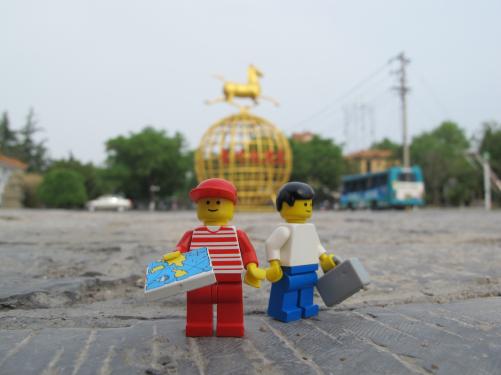
"Welcome in Qingzhou!"
For most of the people the ancient city of Chang'an, modern Xi'an, was the terminus of the ancient Silk Road. However, archaeological finds prove that this is not true. The trading routes went much further to the east, all the way to the coast of eastern China, even to Japan and Korea. The city of Qingzhou was one of those eastern trading centers where people from the Western Regions and Central Asia settled and integrated into the Chinese society.
Not only goods travelled along the ancient Silk Routes, but also ideas and religions. One of the most important archaeological finds was made on the premises of Qingzhou's Longxing temple in 1996. About 400 Buddhist sculptures, mostly dating from the 6th century, were accidentaly found during construction works. They were burried in an act of Buddhist piety in the first half of the 12th century, as a consequence to the persecutions initiated by teh Song dynasty emperor Huizong, a devoted Daoist.
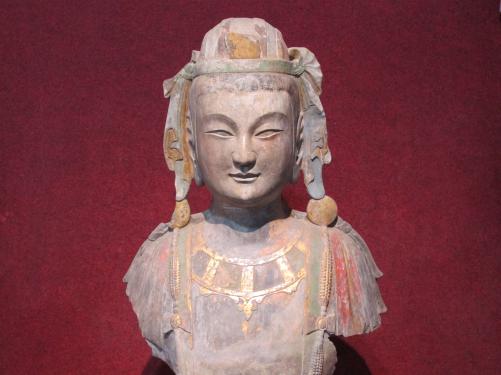
"Venus of the East"
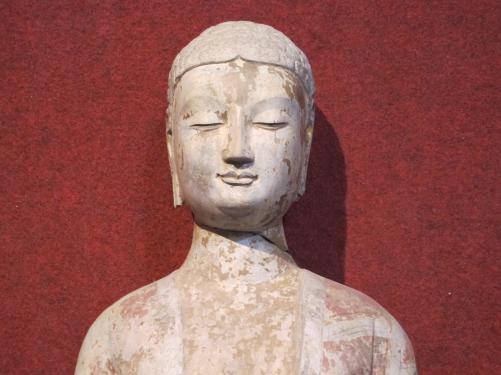
Sculpted or alive?
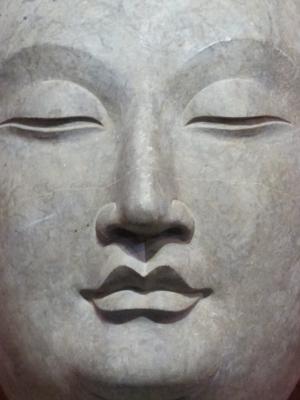
Buddhist sculpture from Qingzhou

Buddhist arhat or western knight?
Traces of Buddhism can not only be found inside the Qingzhou museum...
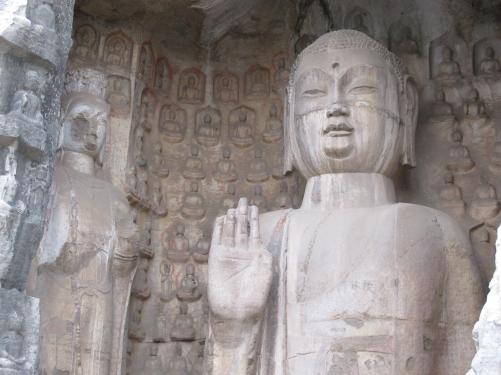
Tuo Shan (Camel-Mountain) featuring a collection of Buddhist grottoes

Mountains of Qingzhou or Buddha's face?

The end of a long day in Qingzhou

"Welcome in Qingzhou!"
For most of the people the ancient city of Chang'an, modern Xi'an, was the terminus of the ancient Silk Road. However, archaeological finds prove that this is not true. The trading routes went much further to the east, all the way to the coast of eastern China, even to Japan and Korea. The city of Qingzhou was one of those eastern trading centers where people from the Western Regions and Central Asia settled and integrated into the Chinese society.
Not only goods travelled along the ancient Silk Routes, but also ideas and religions. One of the most important archaeological finds was made on the premises of Qingzhou's Longxing temple in 1996. About 400 Buddhist sculptures, mostly dating from the 6th century, were accidentaly found during construction works. They were burried in an act of Buddhist piety in the first half of the 12th century, as a consequence to the persecutions initiated by teh Song dynasty emperor Huizong, a devoted Daoist.

"Venus of the East"

Sculpted or alive?

Buddhist sculpture from Qingzhou

Buddhist arhat or western knight?
Traces of Buddhism can not only be found inside the Qingzhou museum...

Tuo Shan (Camel-Mountain) featuring a collection of Buddhist grottoes

Mountains of Qingzhou or Buddha's face?

The end of a long day in Qingzhou
Freitag, 13. Mai 2011
Freitag, 13. Mai 2011
Day 66- 71: Stopover in Beijing
After 65 days I needed a short break. Instantly being on the road, sand everywhere, nothing else but meet on a stick, bread and oily rice...tired of being an alien.
I am just now in Beijing taking some days off, working on my material, writing for my project and trying to cope with all those pictures stuffed in my head from the last months.
Coming to Beijing feels like coming home, now even more as I am staying in a small appartment located in a typical Chinese compound. Not having to pack and unpack my bag everyday, just taking all things out, putting them into the cupboard. Going to the office everyday, taking the bus or the subway - being a commuter just like everyone else.
But don't worry, the journey will continue. Some people might have noticed that a second place is mentioned in the title right after Moscow - Qingzhou. Yet another place which many Chinese have never heard about. I will go to Qingzhou next tuesday, stay there a couple of days, come back to Beijing and leave again for the last two stations of my travel - Luoyang and Xi'an.
I will keep you posted...

Back in Beijing
I am just now in Beijing taking some days off, working on my material, writing for my project and trying to cope with all those pictures stuffed in my head from the last months.
Coming to Beijing feels like coming home, now even more as I am staying in a small appartment located in a typical Chinese compound. Not having to pack and unpack my bag everyday, just taking all things out, putting them into the cupboard. Going to the office everyday, taking the bus or the subway - being a commuter just like everyone else.
But don't worry, the journey will continue. Some people might have noticed that a second place is mentioned in the title right after Moscow - Qingzhou. Yet another place which many Chinese have never heard about. I will go to Qingzhou next tuesday, stay there a couple of days, come back to Beijing and leave again for the last two stations of my travel - Luoyang and Xi'an.
I will keep you posted...

Back in Beijing
Link
(0 Kommentare)
Kommentieren
Freitag, 13. Mai 2011
Day 64-65: China - Lanzhou
We are taking the train again, this time only about 3 hours to the capital of Gansu Province - Lanzhou. I have been in this city several times, and I am really sorry to say this, but I HATE THIS CITY! It is dirty, crowded, loud and NOT pretty! It is famous for its noodle soup with beef. I am sorry again, but I have had better noodle soup in other places of China. Last time I arrived in this city by train from Lhasa, my ears felt like they would explode any minute. This time I was surprised by a huge construction site, muggy weather, sitting in a heated taxi, stuck in the traffic, sweating, well...it's Lanzhou!
Why do I go to this city? Well, it has to offer one of the best museums I have seen in China. Everyone who ever makes it to this place, DON'T EVER SKIP THIS PLACE! It's worth going...Some of China's most famous archaeological finds can be seen in this museum, besides they have real coffee, freshly brewed for only 10 Kuai (about 1 Euro). Yippi!
Here are some of my favourite exhibits:
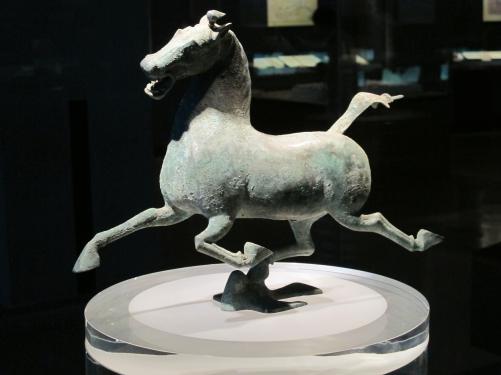
This time the real one...may I introduce to you - the celestial aka the flying aka the galloping bronze horse from Wuwei!
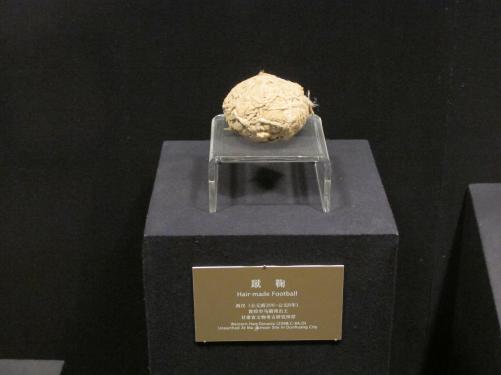
A hair-made football dating from Western Han dynasty (206 BC - 9 AD)

More than 2000 years old lacquered wooden chopsticks
You think this is old? Well, wait...
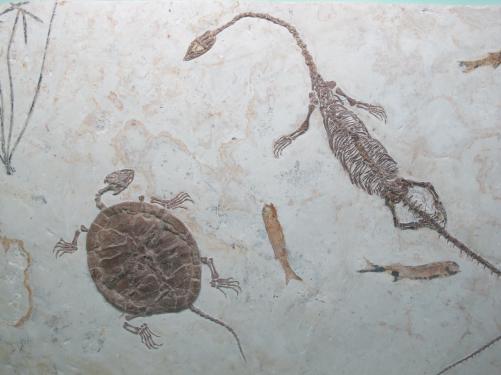
Fossil dating back about 145 million years ago
Not impressed? Well...

And...what's for breakfast?...how about a dinosaur egg?
Why do I go to this city? Well, it has to offer one of the best museums I have seen in China. Everyone who ever makes it to this place, DON'T EVER SKIP THIS PLACE! It's worth going...Some of China's most famous archaeological finds can be seen in this museum, besides they have real coffee, freshly brewed for only 10 Kuai (about 1 Euro). Yippi!
Here are some of my favourite exhibits:

This time the real one...may I introduce to you - the celestial aka the flying aka the galloping bronze horse from Wuwei!

A hair-made football dating from Western Han dynasty (206 BC - 9 AD)

More than 2000 years old lacquered wooden chopsticks
You think this is old? Well, wait...

Fossil dating back about 145 million years ago
Not impressed? Well...

And...what's for breakfast?...how about a dinosaur egg?
Link
(0 Kommentare)
Kommentieren
Freitag, 13. Mai 2011
Day 62-63: China - Wuwei or the quest of the flying horse
The ride from Jiuquan to Wuwei took about 5 hours. The only tickets available were those in a hard-seater cabin, no working air-condition, just old fans under the ceiling, unfortunately not rotating anymore. I already got used to the staring of people at me, the children being afraid and trying to escape from the strange looking tall person with evil-looking barbarian from the western regions. Well, once you sit down and try to start a conversation, the atmosphere usually gets quite relaxed and people want to know more about you.
Whenever I enter a hotel in these remote areas, I am very often rejected. The people behind the reception desk ususally feel a little embarrassed about this, having to tell me that foreigners are not allowed in their hotel. However, rule is rule, so I don't have another chance but to leave and find something else. Sometimes it is easier though when somebody Chinese accompanies you - places which seem to be closed for foreigners all in a sudden become accessible. So I was very happy about the company of my Chinese colleague for a couple of days.
People are sometimes astonished when I tell them about the places I am going to. What do you want to do in Wuwei? Nobody comes here...there is a museum? Really? I never went there...Well, strange foreigners!
Wuwei, known as Liangzhou in history, had been an important place in China for a long time. People started settling in this region about 5000 years ago. In 121 BC the Han emperor Wudi brought his cavalry to Wuwei, the eastern terminus of the Hexi Corridor, to defend his empire against the northern barbarians. He managed to expand the corridor westwards. When the city developed into one of the important crossroads on the Silk Road, more and more people came for settling in this area – people from all over Central Asia brought their culture and ideas to China.
Taking all this into consideration, it comes as no surprise that this city also has a museum...and I had planned to visit it. One of the most important archaeological finds all over China is the bronze figure of a galloping horse, sometimes also called the flying or celestial horse and now the logo for China tourism. This figure was excavated from a Han dynasty tomb in the city of Wuwei. Many other exmples of horses were found here, all of them giving eveidence for the fondness of emperor Wudi for horses, expecially those from the Ferghana Valley. [For all those who are interested in some more information on emperor Wudi of Han dynasty, the first envoy to Central Asia and the blood-sweating horses from Ferghane, you can check out this short text: http://www.silk-road.com/artl/wuti.shtml]
Most of the archaeological finds are now housed in the provincial museum in Lanzhou, but still some of them can be seen in the city museum of Wuwei, located in the local Confucius temple.
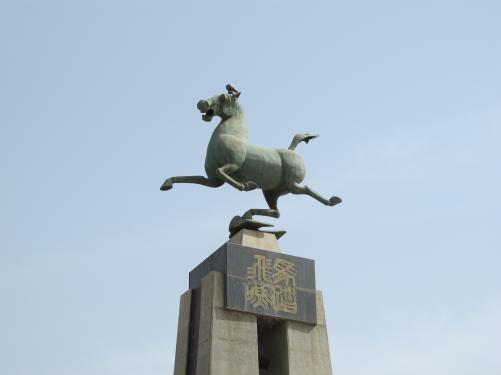
Flying horses all over the city
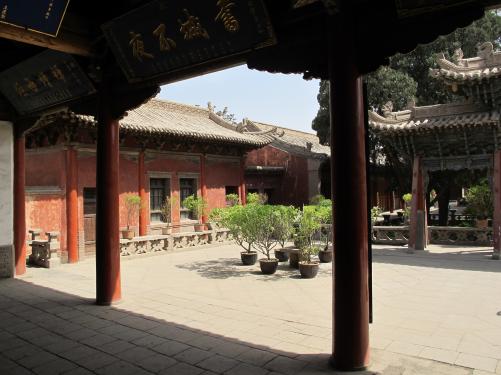
Inside the Confucius temple of Wuwei

"Workshop for copying ancient cultural relics"
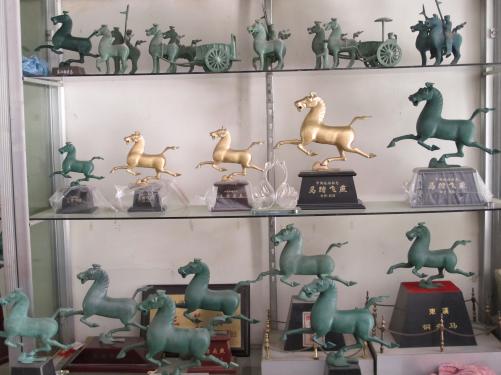
Celestial horses for everyone...

Dayun Si - Temple of the Great Cloud
Whenever I enter a hotel in these remote areas, I am very often rejected. The people behind the reception desk ususally feel a little embarrassed about this, having to tell me that foreigners are not allowed in their hotel. However, rule is rule, so I don't have another chance but to leave and find something else. Sometimes it is easier though when somebody Chinese accompanies you - places which seem to be closed for foreigners all in a sudden become accessible. So I was very happy about the company of my Chinese colleague for a couple of days.
People are sometimes astonished when I tell them about the places I am going to. What do you want to do in Wuwei? Nobody comes here...there is a museum? Really? I never went there...Well, strange foreigners!
Wuwei, known as Liangzhou in history, had been an important place in China for a long time. People started settling in this region about 5000 years ago. In 121 BC the Han emperor Wudi brought his cavalry to Wuwei, the eastern terminus of the Hexi Corridor, to defend his empire against the northern barbarians. He managed to expand the corridor westwards. When the city developed into one of the important crossroads on the Silk Road, more and more people came for settling in this area – people from all over Central Asia brought their culture and ideas to China.
Taking all this into consideration, it comes as no surprise that this city also has a museum...and I had planned to visit it. One of the most important archaeological finds all over China is the bronze figure of a galloping horse, sometimes also called the flying or celestial horse and now the logo for China tourism. This figure was excavated from a Han dynasty tomb in the city of Wuwei. Many other exmples of horses were found here, all of them giving eveidence for the fondness of emperor Wudi for horses, expecially those from the Ferghana Valley. [For all those who are interested in some more information on emperor Wudi of Han dynasty, the first envoy to Central Asia and the blood-sweating horses from Ferghane, you can check out this short text: http://www.silk-road.com/artl/wuti.shtml]
Most of the archaeological finds are now housed in the provincial museum in Lanzhou, but still some of them can be seen in the city museum of Wuwei, located in the local Confucius temple.

Flying horses all over the city

Inside the Confucius temple of Wuwei

"Workshop for copying ancient cultural relics"

Celestial horses for everyone...

Dayun Si - Temple of the Great Cloud
Link
(0 Kommentare)
Kommentieren
... ältere Einträge
